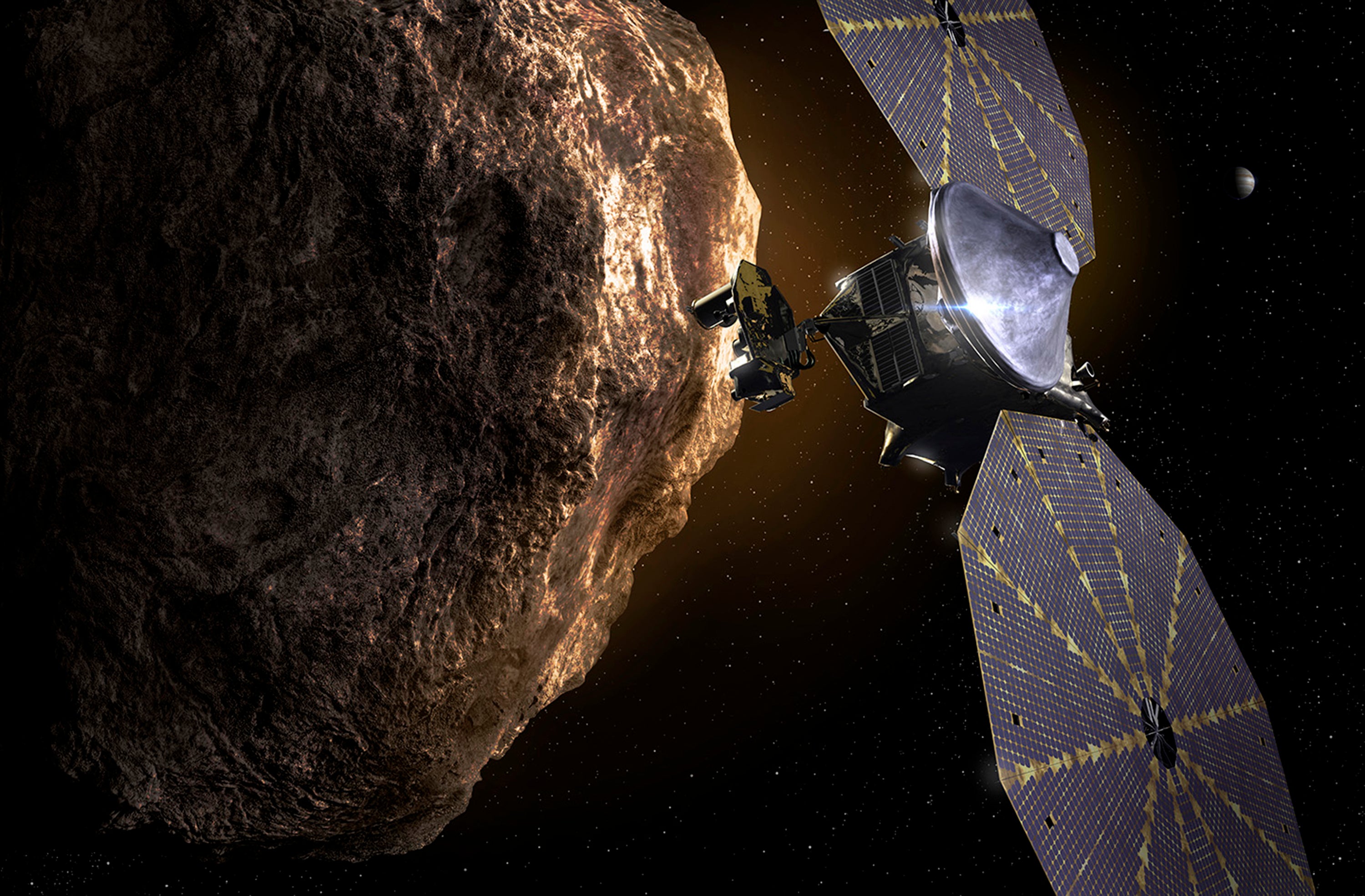Solar wing jammed on NASA spacecraft chasing asteroids
NASA is debating whether to try to fix a jammed solar panel on its newly launched Lucy spacecraft, en route to explore asteroids

Your support helps us to tell the story
From reproductive rights to climate change to Big Tech, The Independent is on the ground when the story is developing. Whether it's investigating the financials of Elon Musk's pro-Trump PAC or producing our latest documentary, 'The A Word', which shines a light on the American women fighting for reproductive rights, we know how important it is to parse out the facts from the messaging.
At such a critical moment in US history, we need reporters on the ground. Your donation allows us to keep sending journalists to speak to both sides of the story.
The Independent is trusted by Americans across the entire political spectrum. And unlike many other quality news outlets, we choose not to lock Americans out of our reporting and analysis with paywalls. We believe quality journalism should be available to everyone, paid for by those who can afford it.
Your support makes all the difference.NASA is debating whether to try to fix a jammed solar panel on its newly launched Lucy spacecraft, en route to explore an unprecedented number of asteroids.
The problem cropped up shortly after the spacecraft's Oct. 16 liftoff on a 12-year journey.
After measuring the electric current this week, NASA reported Wednesday that one of Lucy’s two giant, circular solar panels is only between 75% and 95% extended. A lanyard is holding it in place.
Any attempt at reopening the wing — which is 24 feet in diameter (7 meters) — would not occur before mid-November.
So far, the problem has not affected Lucy's outbound flight, so there's no rush to figure out the next step, according to NASA. Everything else on the spacecraft is working properly.
The nearly $1 billion mission seeks to explore seven so-called Trojan asteroids that share Jupiter s orbit around the sun and another space rock closer to home. Lucy should swoop within 600 miles (965 kilometers) of each target.
___
The Associated Press Health and Science Department receives support from the Howard Hughes Medical Institute’s Department of Science Education. The AP is solely responsible for all content.